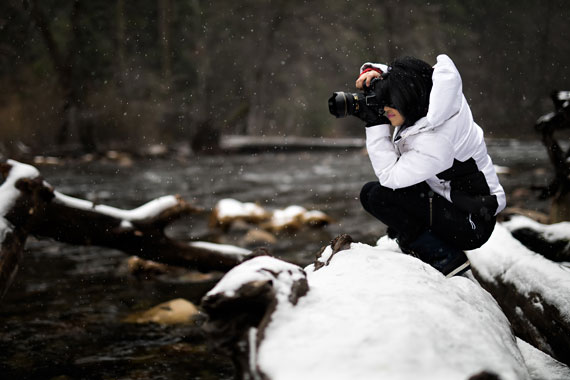Of all the seasons of the year, winter is probably the most difficult one for photographing. The main reason is the effect snow has on the light and the resulting exposure problems. Also the lack of shadows will result in loss of texture. But before going into the technical issues, the first thing is to make sure your camera is ready to work in cold conditions and is protected against the climate factors that cannot just ruin your photos but even damage your camera. Here are a few tips on how to make sure your equipment is ready to work in the cold.

Photo captured by Sean Pierce
Using the camera with gloves is often awkward and it’s tempting to keep the camera warm so that it can be held in one’s bare hands. It’s easier yes, but what happens when a warm camera is suddenly exposed to the cold? Condensation! And once you have condensation in a digital camera you’ll get a warning and the camera may stop working. You will be stuck waiting for the condensation to evaporate before you can do anything. If you do get the condensation warning, do not try to open the camera and dry it with a towel or a hair drier. Just leave the camera in a warm dry place until it’s ready to work again and then allow it to get cold in stages so the problem does not reoccur.
If you want to do great winter photography you have to tough it out a bit. If your car is too warm, guess what will happen when you camera goes out in the cold? Condensation. Dress up extra warm and keep your car temperature as low as you can. It’s also easier to get out fast when you see a photo opportunity if you’re dressed for it.
When you finish taking photos, place the camera in a tight camera bag before returning to your car or entering a building. The bag will act as insulation and prevent the camera temperature from changing too fast. This will prevent rapid warming and our same old enemy – condensation. Take the memory card out before placing the camera in the bag so that it can be left to warm up, safely while you put the card in it for immediate use.
Also, if you are in falling snow, brush it off the camera with your hand or a brush. Do not blow the snow away. Your warm breath could cause the snow to melt on the camera surface, which, if it’s cold enough, will freeze into an icy film.
Batteries do not like the cold and in extreme winter conditions they may not work, or have little power available. Keep two sets of batteries with you – one in a warm inner pocket and one in the camera and when you see the power levels of the batteries in the camera begin to drop, switch them with the ones in your pocket. The cold batteries will regain their power as they warm up and you can keep switching the batteries around.
About the Author:
Peter Timko writes for Proud Photography, an online photography school.
Like This Article?
Don't Miss The Next One!
Join over 100,000 photographers of all experience levels who receive our free photography tips and articles to stay current:





